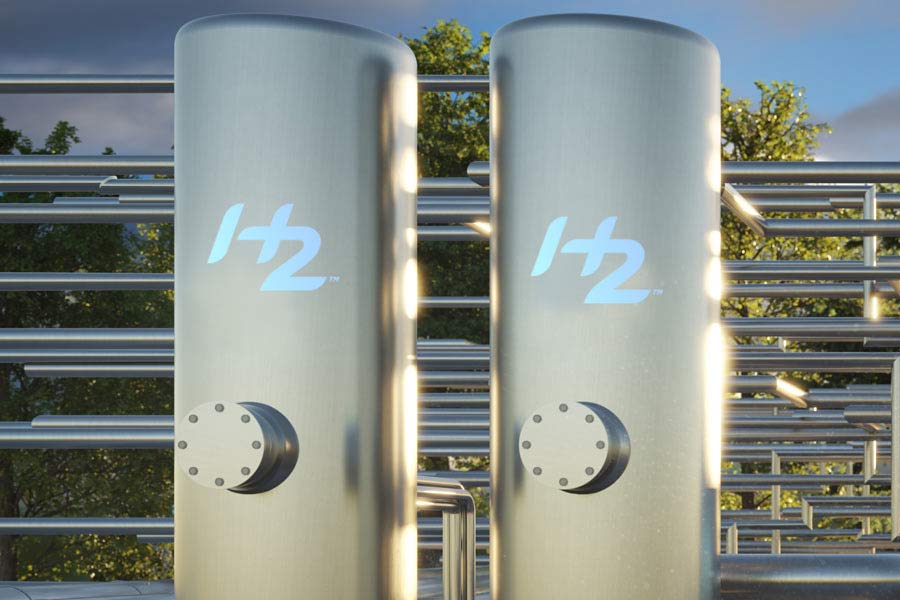Hydrogen A to Z Series: C For Compression
By: GenH2 Staff
Read Time: 3 minutes
Defining the Hydrogen Economy from A to Z: C is for Compression
Continuing in our defining the Hydrogen Economy from A to Z series, we are focusing on the letter C and discussing an important subject compression and the role it plays and will continue to perform in a cleaner energy future.
Compression has a lot to do with hydrogen systems across the board. Four main categories we will take a quick look at: Compression of hydrogen at high pressure, compression of hydrogen at low pressure, compression of helium at low pressure, and compression of liquid hydrogen at moderate pressure. The moving of liquid hydrogen (LH2) from low pressure to low pressure is usually thought of as pumping, but at only a few bars of pressure or more, the pumping process is technically a special case of compression (but we will take a look at pumping in another article).
Most familiar are the compression systems to provide high-pressure gaseous hydrogen (GH2) storage to cars, buses, and other vehicles and equipment. These compression systems, for GH2 in and GH2 out, work to provide either 700 bar or 350 bar storage on-board the vehicle. These often-multi-staged systems work in tandem with facility high-pressure tanks in a cascade fashion and may operate as high as 1100 bar to achieve the desired dispensing. The hard work of compression creates much heat that must also be rejected and thus chiller units and cooling blocks at the dispensing are a key requirement.
On the other end of the pressure spectrum, the compression of hydrogen at low pressures is of vital importance to the hydrogen industry. All large-scale production of LH2 is based on a succession of hydrogen compression and orifice (or “JT valve”) expansion stages operating inside a large evacuated cylindrical cryostat vessel which is commonly referred to as the “cold box.” This refrigeration process, an open cycle “Claude” type, is done in combination with an air separation plant as liquid nitrogen pre-cooling is required for optimum energy efficiency. Large-scale industrial liquefaction of hydrogen typically means 15 tons per day and up.
Next, we can think about low pressure compression of helium. Helium is the working fluid of choice for almost all commercial cryocoolers (small cryo-refrigerators). These highly developed specialized units work by the compression of expansion of helium in a host of different ways depending on the end-use application and requirements. The “cold head” or cryogenic cold-mass end of the cryocooler is relatively small compared to the business end of the cryocooler which is the helium compressor. The compressor always requires some type of chiller or cooling apparatus to reject that heat generated through the gas compression process. Stepping up in size to the mid-scale of hydrogen liquefaction, we also have the helium compression and staged turbo-expansion machines that comprise the “Brayton” type of cryo-refrigeration process. These systems can produce from 100 to 1000 kilogram per day of LH2 and can be designed to be used with or without LN2 precooling, depending on the situation.
Finally, let us look at the low-pressure compression of LH2. The LH2 is always stored at near atmospheric pressure. But LH2 can be taken into a compression unit and output at modest pressures of up to 40 bar or so. This process is highly efficient and requires no multiple stages and no chillers as the main mechanical work of compression has already been accomplished through the liquefaction process. The utility here is energy-dense hydrogen, about like that of LH2, but in a simple supercritical fluid form commonly referred to as “cryo-compressed” hydrogen.
Follow us next week as we continue in our Defining the Hydrogen Economy from A to Z series with the letter C and discuss Cryogenics and other associated and important “C” words.
 Copyright All Rights Reserved GenH2
Copyright All Rights Reserved GenH2
 Copyright All Rights Reserved GenH2
Copyright All Rights Reserved GenH2